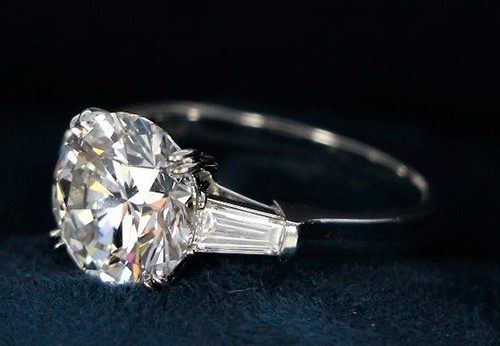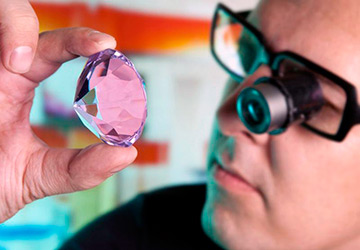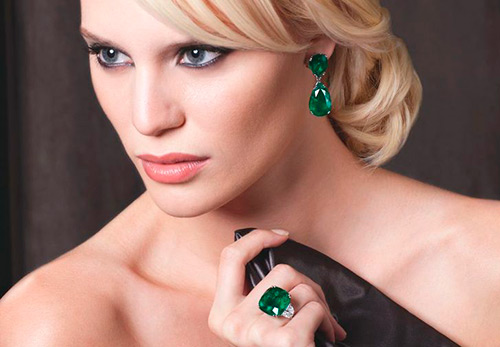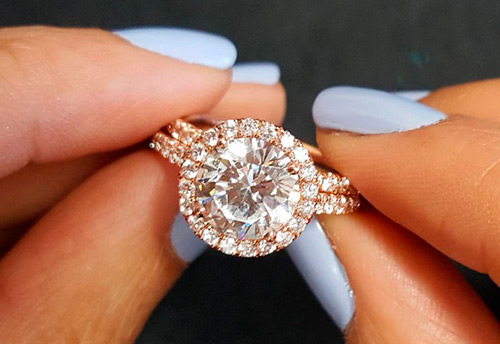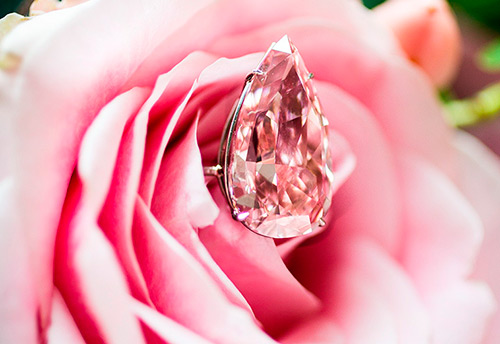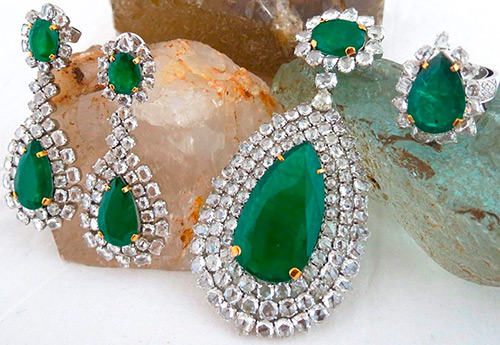Jewelry
Types and forms of cutting precious stones
What is better - to keep the original weight of the stone or still accept its loss, but at the same time get the perfection that pleases the eye?
Most craftsmen strive for beauty. But in ancient times, the main stone processing was a simple scratching out of figures and symbols. Until the 17th century, the question of cutting was not raised at all, the stones were processed, only slightly grinding the natural crystal surfaces, and also polished.
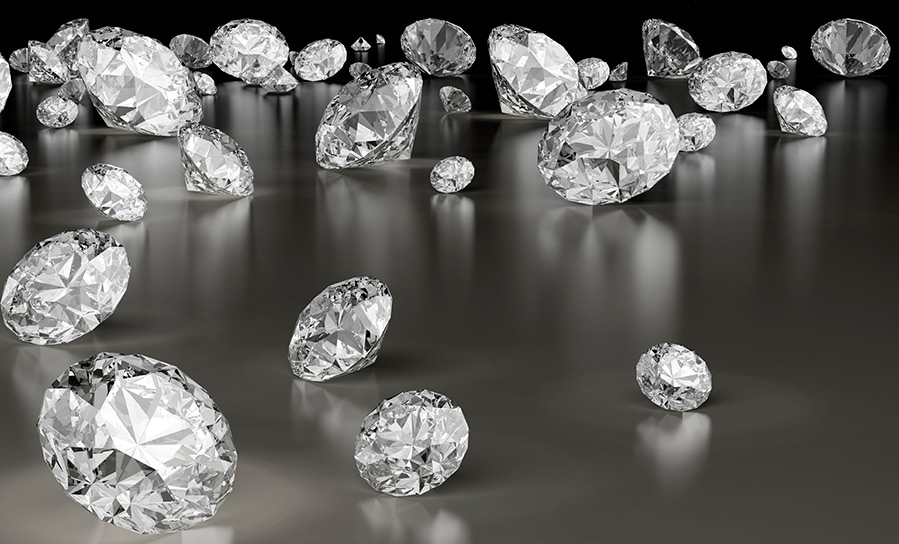
It is assumed that the first master grinders were in India... It was this country that was famous for its precious stones, which was not happiness for it, but a tragedy - after all, the so-called "civilized" countries dreamed of finding and conquering a fairy-tale country and its people.
The oldest surviving gemstones are cut from many small and uneven facets. This cutting was carried out in India. Since the end of the 15th century, the grinding disc began to be used, and this made it possible to improve the quality of the cut. As you know, at first the master cutters slightly sharpened the stone, giving it the shape of an octahedron. This is the natural shape of the diamond.
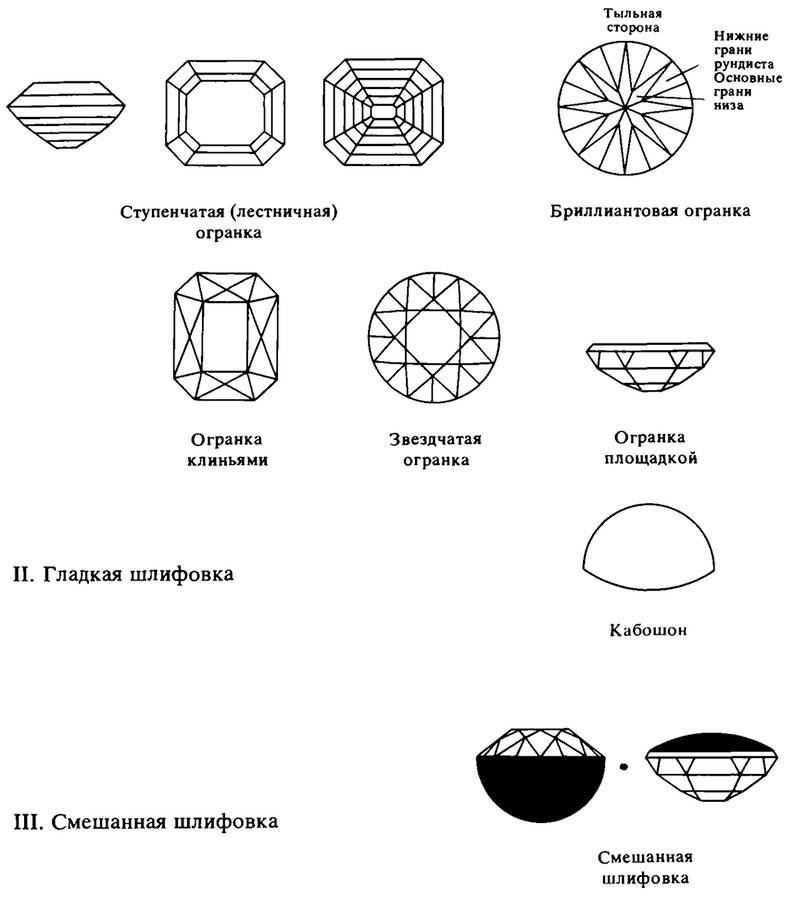
In Milan and Venice during the 16th century, Italian cutters cut tabular cut stones with a horizontal top facet. Cutters of this period occupied the honorable first place among all professions and crafts. In the 17th century, Antwerp was the main economic center of all of Europe, and the skill of its cutters was generally recognized.
Of all the old cuts, some of them should be mentioned.
XVI century - "tabular"
XVI - XVII century - "eight-eight"
17th century - the Mazarin cut, which was supposedly named after the French cardinal Mazarin, who supposedly suggested to the master cutter the idea of cutting with 34 facets - 17 facets on the top and 17 - on the bottom. The cardinal put together a unique collection of precious stones, which became a treasure of the French court.
At the end of the 17th century, the Venetian master Vicenzio Peruzzi developed a 58-facet cut, which he called "Peruzzi"
Late 18th - early 19th century - Old Mine cut
At the beginning of the 19th century, the "old cut" appeared
And finally, the most famous - Brilliant cut, developed on the basis of the "old cut". It is thanks to the "brilliant" cut that the diamond acquired a hitherto unprecedented perfection and appeared to the world in all its glory and beauty.
But in addition to the natural facets of the crystal, more and more facets appeared, their number increased, and the optical effect of the stone increased. In the future, cutting methods were improved, new technologies and opportunities appeared, thanks to which the beauty of precious stones was discovered. And now there are many such methods that give the stone maximum shine.
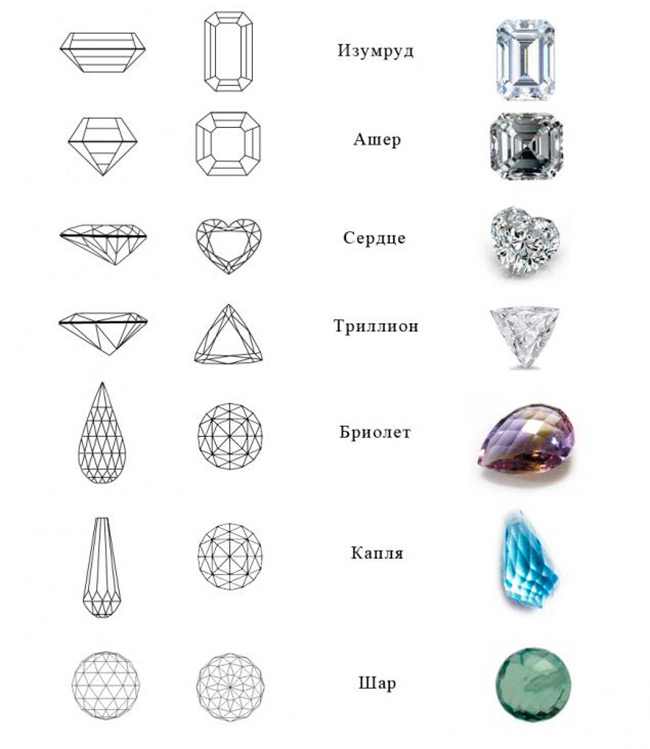
And here is the history of the cutting of one of the diamonds
The world's largest diamond is the Cullinan. It was found in 1905 in South Africa in the Transvaal province, in a mine owned by Thomas Cullinan. The stone was 11cm long, 5cm wide and 6cm high, and weighed 621.2 grams or 3106 carats. Thomas Cullinan sold it to the Transvaal government, which presented this jewel to King Edward VII of England on his birthday. The king entrusted the sawing of the stone to the Asher brothers, cutters from Amsterdam, who had already proved their skill in cutting precious stones. Finally, in 1908, on February 10, the sawing of the stone took place.
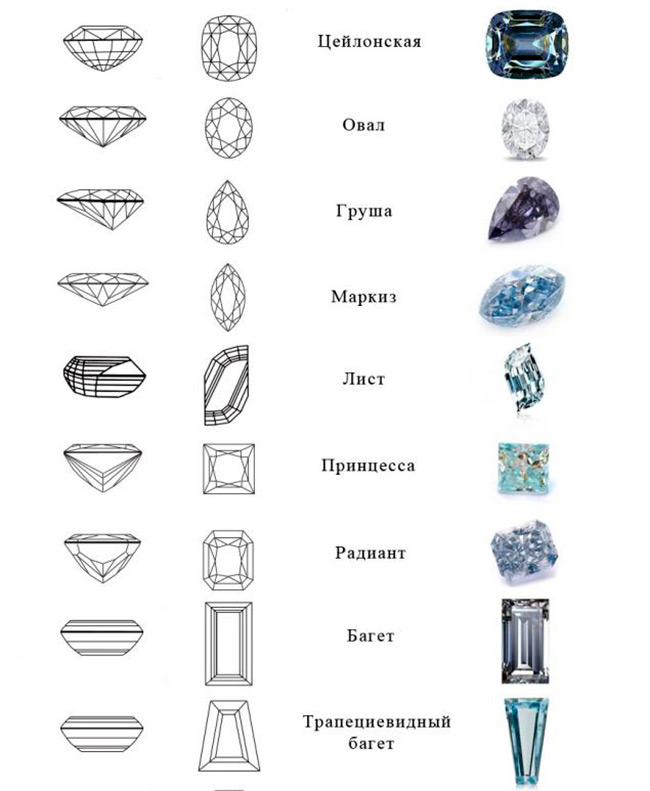
The cutters were terribly tense, and one of them, Joseph Asher, even fainted, thinking that he had made the first cut during sawing unsuccessfully. However, everything was correct, and the calculation turned out to be correct. As a result of sawing, 9 large stones and 96 small ones were obtained.Then the cutting began, which took several months. After cutting, the total weight of the 105 stones was 1,055.9 carats, that is, 65% of the original weight was lost. The two largest stones "Cullinan I and II" adorn the Treasury of the British Crown.
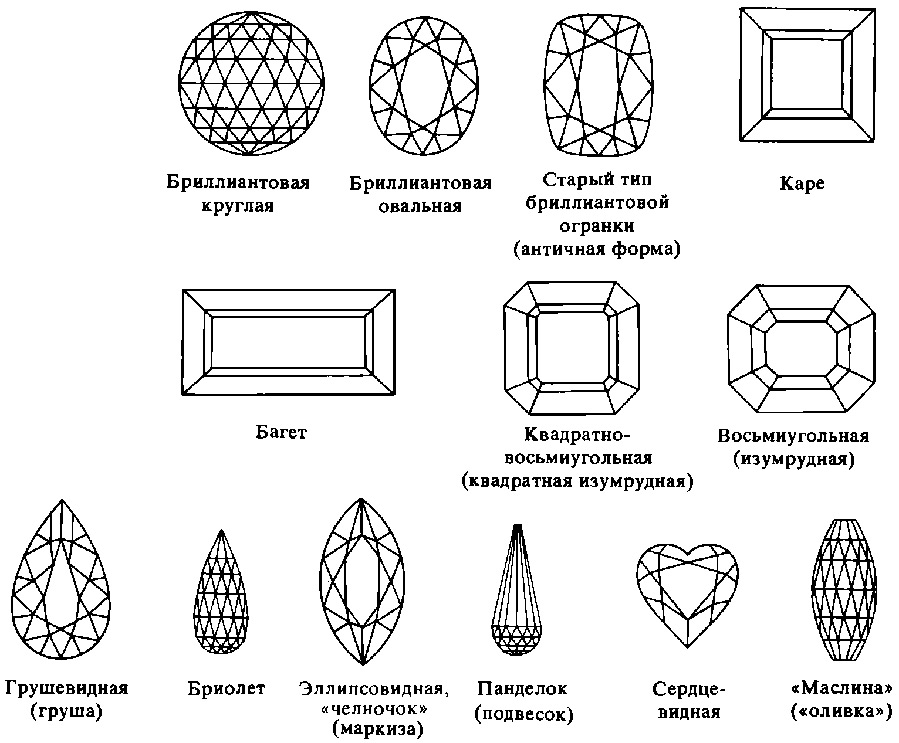
Various types of cut are used - "marquise", "drop", "emerald" and many other fantastic types invented by master cutters. If we consider the cut based on the optical impression, then three main types of cut can be noted - faceted, smooth and mixed.
It is in the faceted cut that we can see the truly magical shine of the stone. This type of cut has many small facets that enhance the brilliance and color of the stone. Faceted cut has many different types of cut and is used for transparent stones. The faceting technique was once kept in strict secrecy.
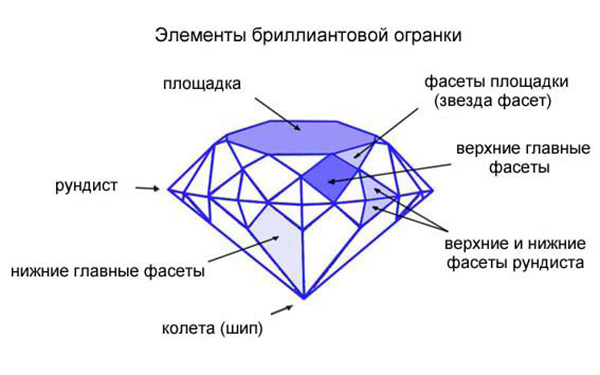
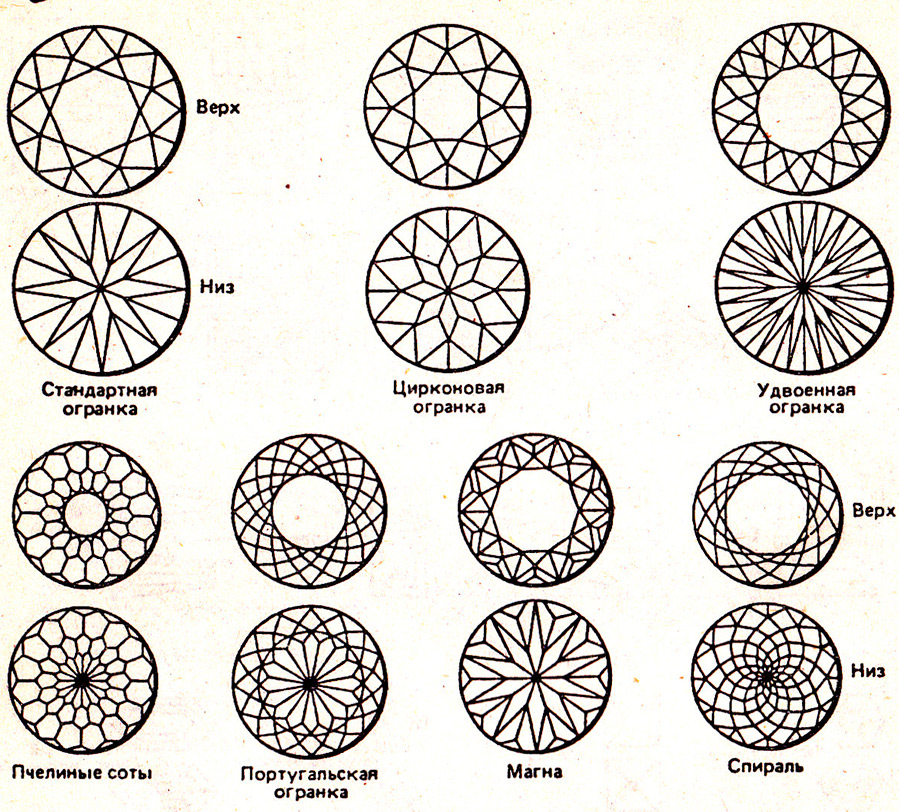
Smooth cut, or polishing is done convex (cabochon) or smooth and is used for many ornamental stones and opaque gemstones. For such stones as agate, turquoise, coral, it is enough just to polish the surface, and this will decorate it and convey the intricate fantastic patterns of the stone.
Mixed cut Is a combination of faceted cutting and smooth grinding. The stone in one part may have edges, and in the other it may be smooth.
Cut shape - this is another theme of design fantasy. The cut shapes of the stones are extremely varied. They can be round, conical, square, diamond-shaped, heart-shaped, oval, rectangular, triangular, polygonal and, finally, simply fantastic, which are the images of designer fiction.
Precious crystals, passing the flaming bowels of the Earth, acquire a noble appearance and amaze with their radiance and beauty, and in combination with the creativity and skill of the master, they become the perfection of nature.
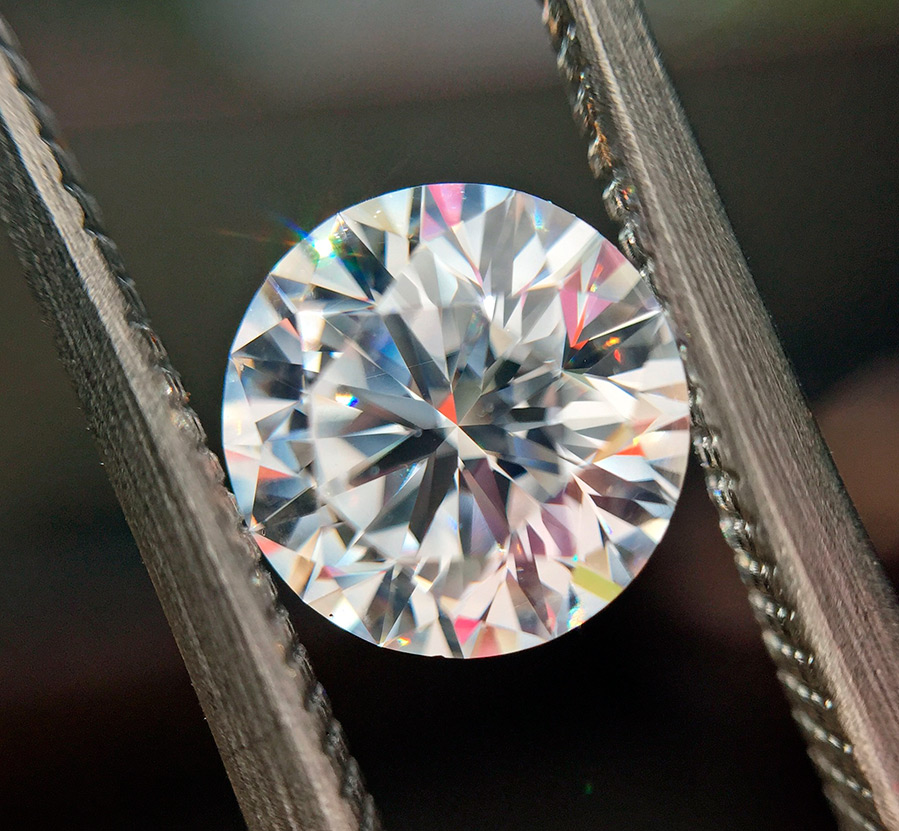
Comments and Reviews
Add a comment
Rating news
Shades of clothing that make women look younger
What shades of hair make women younger: rules and photos
Funny wedding dresses - photos and ideas
12 most expensive down jackets for the winter
How to look 25 at 40: tips from supermodels
Beautiful schoolgirls
Anti-aging haircuts and hairstyles for women
Fashionable skirts for autumn and winter
Fashionable women's trousers for the cold season
Fashionable and stylish sandals for summer 2024
Spring-summer 2024
 Fashionable dresses and tops with thin spaghetti straps
Fashionable dresses and tops with thin spaghetti straps
 Bandana tops: how to wear stylishly and beautifully
Bandana tops: how to wear stylishly and beautifully
 How to put together the perfect men's wardrobe for the summer
How to put together the perfect men's wardrobe for the summer
 Fashionable shorts for spring-summer 2024
Fashionable shorts for spring-summer 2024
 Fashionable skirts for spring-summer 2024: a guide to online shopping
Fashionable skirts for spring-summer 2024: a guide to online shopping
 The most fashionable dresses spring-summer 2024: styles and colors
The most fashionable dresses spring-summer 2024: styles and colors
 Fashionable total look 2024: image ideas and trends
Fashionable total look 2024: image ideas and trends
